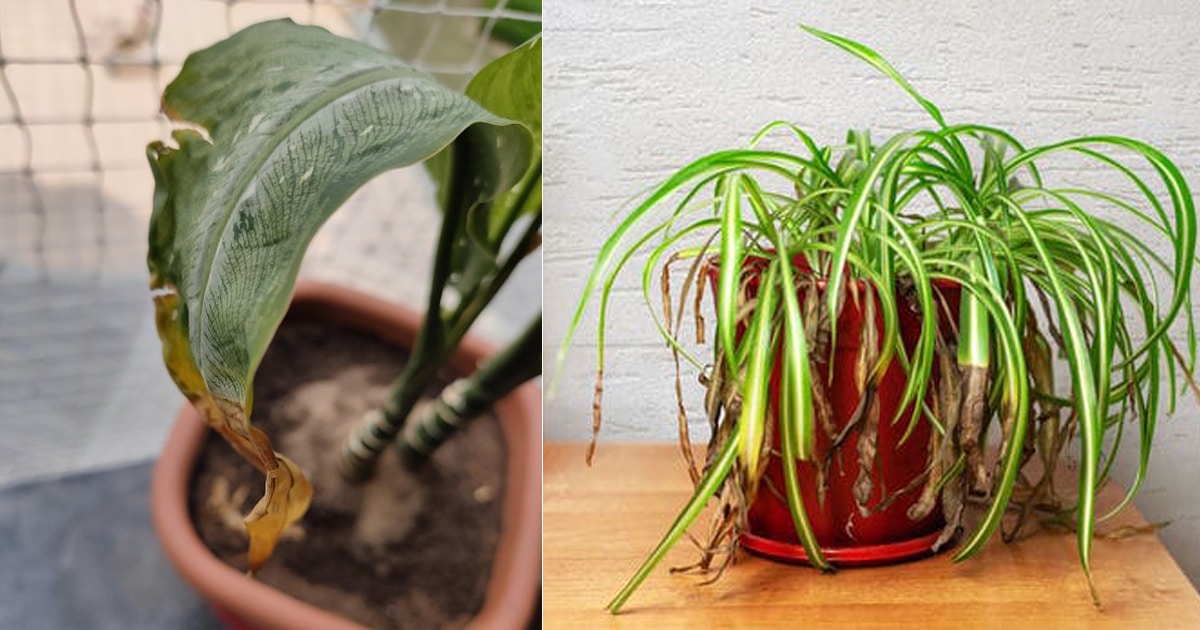By Hania Yaqoob
W hen leaf tips on your favorite plants turn brown, it’s easy to blame diseases or insect pests. But the real culprit behind these troubling symptoms is usually improper care — as tough as that may be to accept. Whether the problem occurs on indoor or outdoor plants, choosing the wrong remedy can send your plants into tailspins. But taking time to identify and correct the real problems can put brown-tipped plants back on track.It can be tricky to figure out what’s wrong with a previously green and gorgeous houseplant that starts to look unhealthy. Could the culprit be a disease or something like temperature extremes or a nutrient problem? If you’re wondering why your plant leaves are turning brown, it may be a sign that something is off with your houseplant’s living conditions. Although browning on the foliage can happen for a number of reasons, the most likely causes are the way you’re watering, the amount of humidity around the plant, and too much fertilizer in the potting soil.

Plants naturally use and lose water through their tissues each day. Leaf tips turn brown when that lost water can’t be replaced for some reason. Ideally, water flows from plant roots through stems and waterways until it finally reaches leaf tips last. But when water’s limited, other plant parts get served first; tip cells lose out and die from a kind of drought. Anything that inhibits roots from absorbing enough water — or supplying it to the plant fast enough — can lead to unsightly brown tips. This includes providing the plant with too much water, too little water or too much fertilizer. Root damage or distress also prevents roots from doing their job. Though specific factors can differ between protected indoor plants and plants exposed in landscapes outdoors, brown tips arise for the same basic reasons. Once they turn brown, those dead tip cells can’t be revived, but quick corrections help restore the rest of your plant to health.
During active periods of growth, most outdoor plants need the equivalent of at least one inch of rainfall each week, including natural precipitation. When watering, this equals about 5 gallons of water per square yard. Most roots, even on large landscape trees, stay in the top 6 to 12 inches of soil. One inch of water seeps down to that depth in most soils, keeping healthy roots supplied and leaf tips well-hydrated.1
Brown leaf tips can also indicate a buildup of salts from fertilizers over time or from softened water. Most potted plants do need a little fertilizer once in a while so they have all the nutrients they need to grow. But just like our own bodies and vitamins, remember that a little goes a long way and more is not necessarily better. Even when you’re feeding your plants just the right amount, salts do tend to accumulate in the potting mix (not adding enough water to drain out the bottom makes it worse). That’s one reason it’s a good idea to repot with fresh soil every couple of years. Softened water can also turn the leaf tips brown, so consider using distilled or filtered water to keep your plants happy.
























